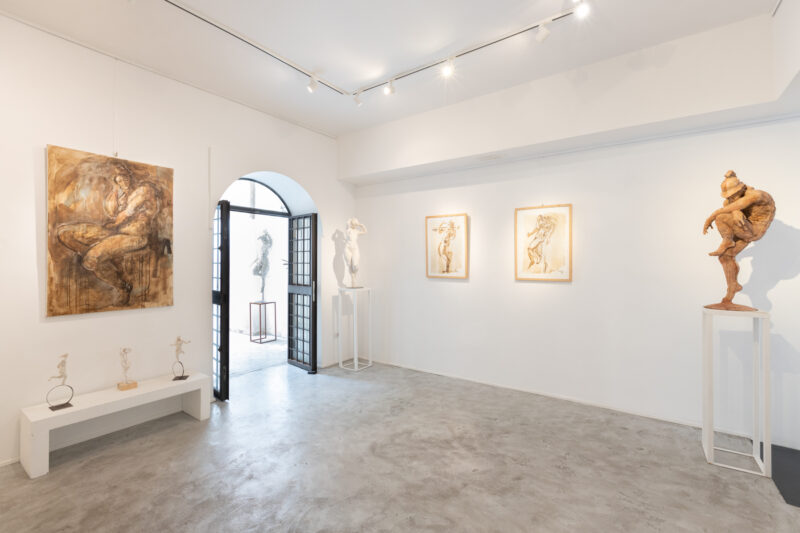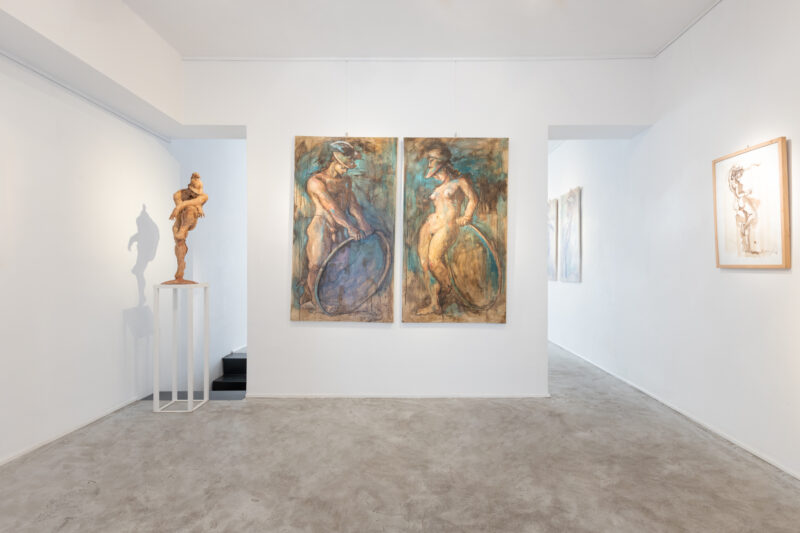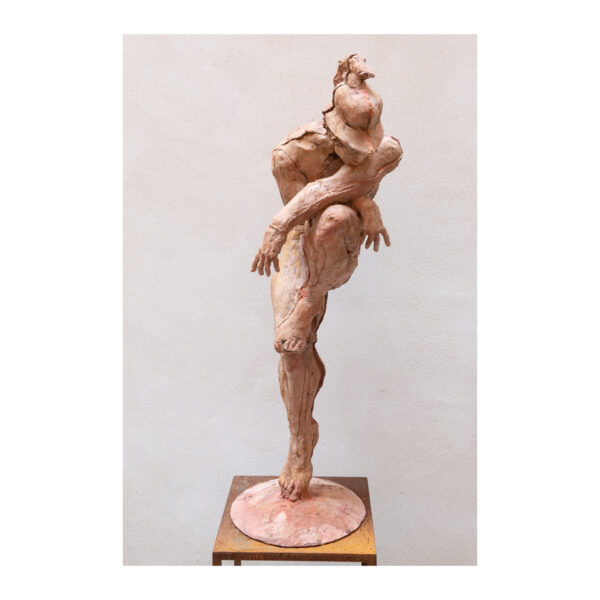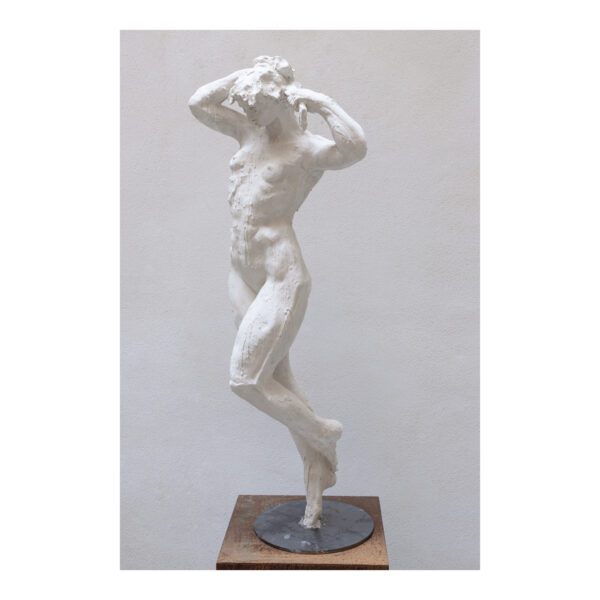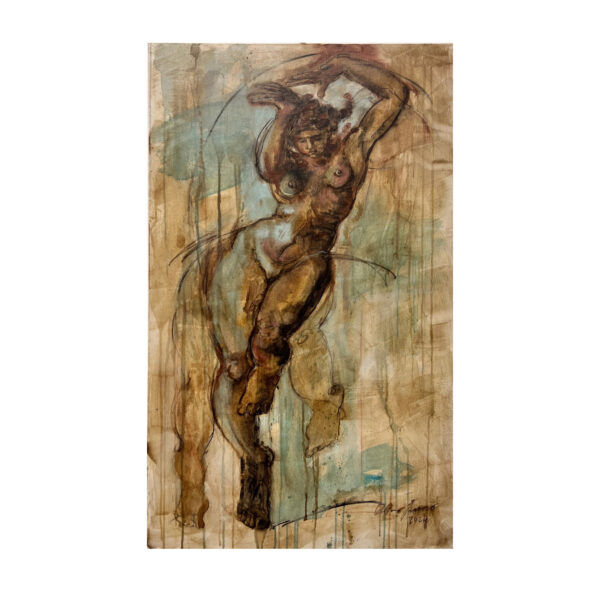
INFO
From May 16 until June 12, 2024
Vernissage: Thursday May 16 and Friday May 17, 6:00 – 9:30 pm
Von Buren Contemporary
Via Giulia 13
00186 Rome
Von Buren Contemporary presents
ARCADIA
the solo exhibition of
VITTORIO IAVAZZO
Presentation text: Anna Gasperini
Von Buren Contemporary
Via Giulia 13, 00186 Rome
Von Buren Contemporary is proud to present Arcadia, the solo exhibition of young Neapolitan sculptor Vittorio Iavazzo.
The ancient Greek region of Arcadia registers in the collective imagination as a timeless place, the byword for an idyllic world where nature and pastoral landscapes reign and chaos is banished. Vittorio Iavazzo draws on the ancient and mythological iconography associated with this paradise and adapts it to contemporary times. The utopian image of Arcadia does not represent an escape route from reality for Iavazzo but rather an ideal place which can be made visible through art.
The works on show, which include the paintings and drawings that serve as studies for Iavazzo’s sculptures, focus on mythological figures who follow an allegorical path, an inner journey that leads from loss to rebirth.
Apollo and Daphne open the quest and are portrayed at the climax of their tale, when the nymph turns into a laurel tree, leaving her forlorn would-be lover clutching at a twig. The loss, however, is not intended as an ending but rather as the start of a spiritual journey that will usher in vital change, as symbolised by the rings on which many of the figures are set, like wheels circling into the future.
Iavazzo experiments with different techniques in his sculptures, combining the use of paper mache with other materials that echo the imagery of the Classical world. Apollo and Daphne are treated with oxides to give the sculptures an ancient look, similar to that of the recently unearthed San Casciano bronzes, worn by time and atmospheric agents. Mars and Athena, on the other hand, are made with a mix of paper and terracotta powder, a technique that brings to mind the surface appearance of ancient Greek vases.
The paintings and drawings on display, in keeping with the journey conceived by the artist, are populated by figures that emerge from the ideal world of Arcadia, such as nymphs, fauns and pagan divinities. Experimentation is again a key feature with Iavazzo applying materials such as coffee and copper oxide to the surface of the canvas or paper, with the aim of giving the images an aura of antiquity.
Born in Naples in 1991, Vittorio Iavazzo holds a degree in Graphic Art and Illustration from the Academy of Fine Arts in Naples. Since completing his studies in 2016, he has created installations for theatre sets, advertising campaigns and religious events and exhibited in galleries and museums across Italy, gaining increasing recognition for the technical mastery and emotional connection of his works.
Made principally from paper mache and eco resins, Iavazzo’s sculptures combine traditional and modern techniques. His figures evoke the rich artistic history and traditions of his country and more specifically his home city of Naples where artists have exploited the infinite creative possibilities of paper mache for centuries to construct nativity scenes and theatre sets of astonishing inventiveness and craftsmanship. Iavazzo’s choice of materials is based on concern for environmental issues while the often colourful, ‘pop’ impact of his creations gives them a further contemporary edge.
ARCADIA
Arcadia, the ancient Greek region in the heart of the Peloponnese, registers in the collective imagination as a timeless place, the byword for an idyllic world where nature and pastoral landscapes reign and chaos is banished.
Vittorio Iavazzo draws on the ancient and mythological iconography associated with this paradise, adapting it to contemporary times. The utopian and romantic image of Arcadia does not represent an escape route from reality for Iavazzo, but rather a symbolic element, an invisible guide, an ideal place which can be made visible through art.
The artist’s works focus on mythological figures who follow an allegorical path, an inner journey that leads from loss to rebirth. Apollo and Daphne open the quest and are portrayed at the climax of their tale, when the nymph turns into a laurel tree, leaving her forlorn would-be lover clutching at a twig.
The loss, however, is not intended as an ending but rather as the start of a spiritual journey that will usher in vital change, as implied by the circles on which the figures are set: unstable elements that make the search for balance and movement inevitable, like wheels circling into the future.
The symbolic journey laid out by Iavazzo ends with a rebirth, represented by allegorical figures such as Venus rising from the waters and who, having explored the abyss, can finally bare herself to the light of the sun.
Iavazzo experiments with different techniques in his sculptures, combining the use of paper mache with other materials that echo the imagery of the Classical world. Apollo and Daphne are treated with oxides to give the sculptures an ancient look, similar to that of the recently unearthed San Casciano bronzes, worn by time and atmospheric agents.
Mars and Athena, on the other hand, are made with a mix of paper and terracotta powder, a technique that brings to mind the surface appearance of ancient Greek vases.
The paintings and drawings, in keeping with the journey conceived by the artist, are populated by figures that emerge from the ideal world of Arcadia, such as nymphs, fauns and pagan divinities. Experimentation is again a key feature with Iavazzo applying materials such as coffee and copper oxide to the surface of the canvas or paper, with the aim of giving the images an aura of antiquity.
Arcadia is a pilgrimage through an inner world, a silent, theatrical representation full of codes for us to decipher through our gaze and intuition.
Anna Gasperini







